Make do and mend
The exciting new fashion businesses that will reinvent your wardrobe, (even the Royal family are at it). From alterations to repairs, how to give your closet a new lease of life.
If we are going to live by the Rule of Five this year, (only buying five new things), we are going to have to shop our own wardrobes. That means wearing what you’ve got. According to WRAP, at least 25% of our wardrobe goes unworn. What’s more, according to Stitch Fix, 20% of our clothing doesn’t even fit.
Sound familiar? Well I’m worse. I reckon I only wear about 30% of my wardrobe regularly, (not counting gym kit), and 40% occasionally. There’s a good 30% that never gets worn at all and it’s mostly evening wear. Stuff I bought for weddings, parties, events where I needed to shine and couldn’t face the LBD again. Clearly, this stuff needs a new life. And I’m not the only that thinks so. This weekend the Princess of Wales had exactly the same thoughts:

Sadly I don’t have the tailoring team at McQueen (or Prada) on hand, but I do have Nana Sandom of Splendid Stitches. She found me on Instagram, where I was posting about Rule of 5, and was thinking about having some things altered. Was she in the UK? Yes she was. Was she in London? Yes she was. Coincidence of all coincidences, it turns out we actually live on the same street. So Nana came round and had a look. I had two things specifically I felt had potential. The first was an orange taffeta Prada dress I panic bought for a return to work party after my second child. I wore it again for a wedding a few years later and then - that was it. Two wears! 12 years later I had completely outgrown it:
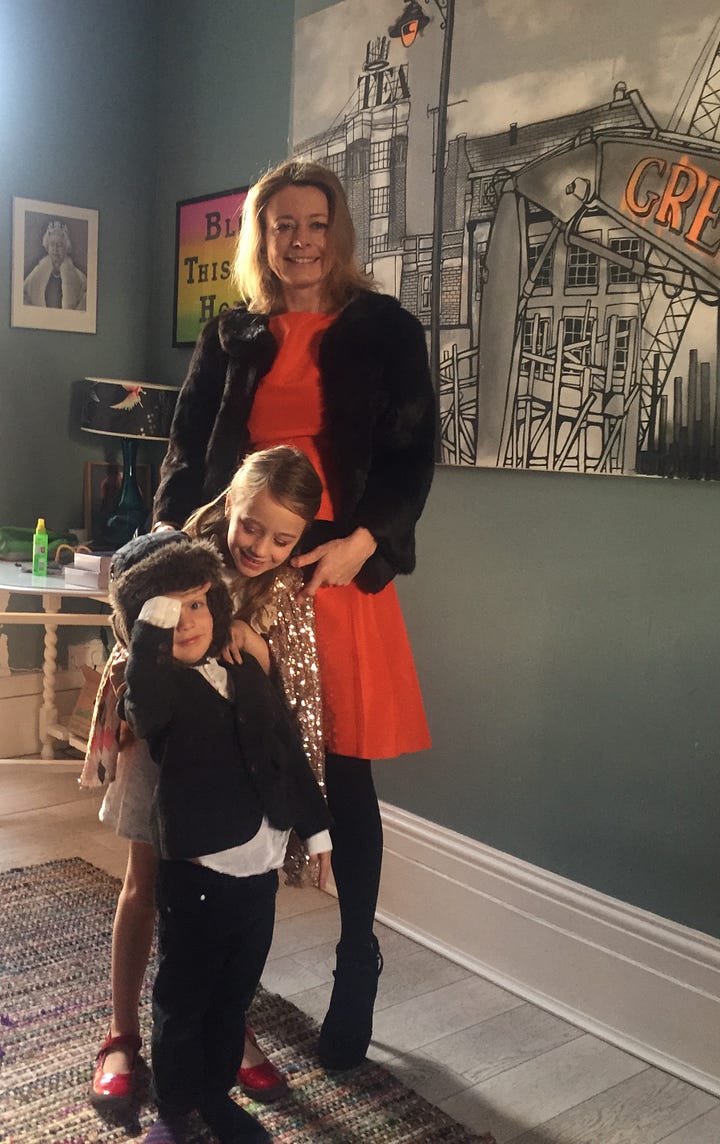
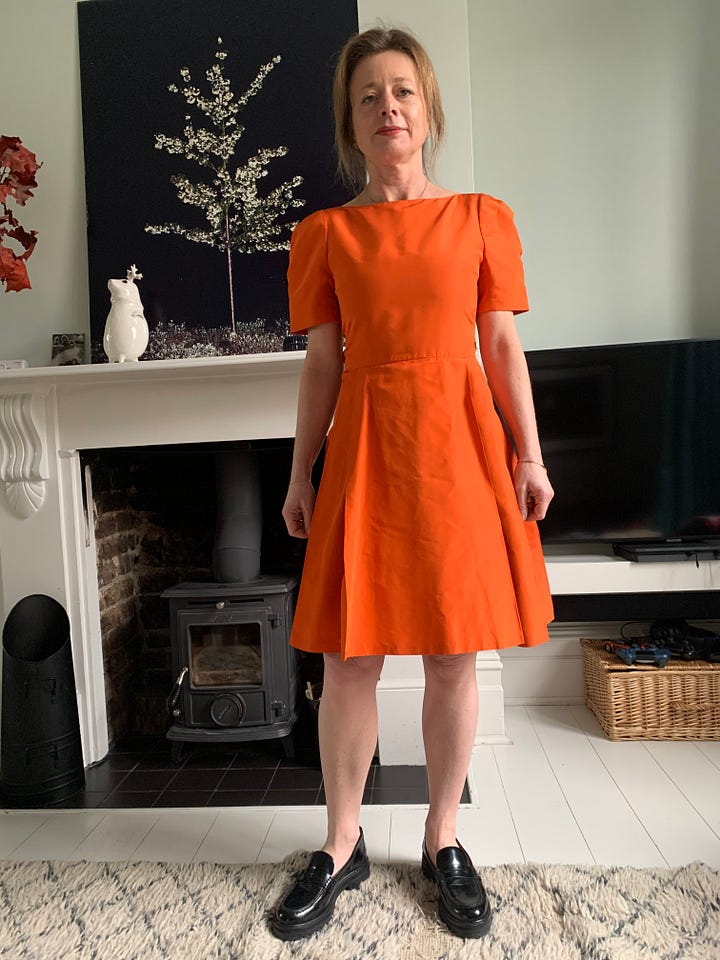
Nana suggested refashioning it into a top. She used the extra material from the skirt to lengthen the sleeves, and shortened the skirt to a peplum. She kept the lovely detail on the back and didn’t have to alter the fit. As a top, this garment now works for day and night - I’m not sure I would quite wear it on a dog walk, but you can see it here styled with jeans and AllBirds trainers, or with some black boots and jewellery for after dark:

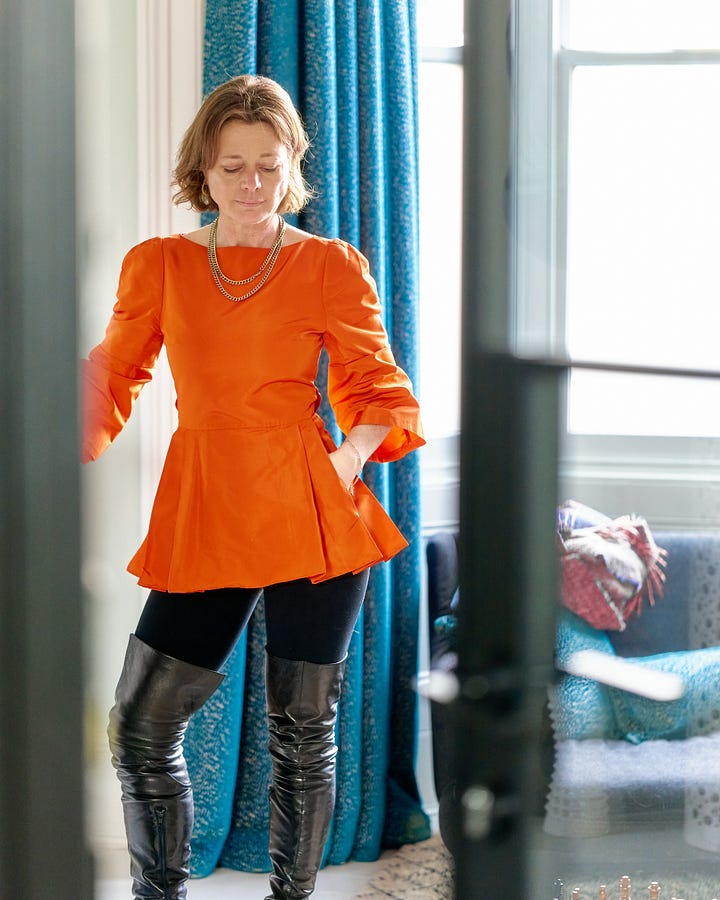
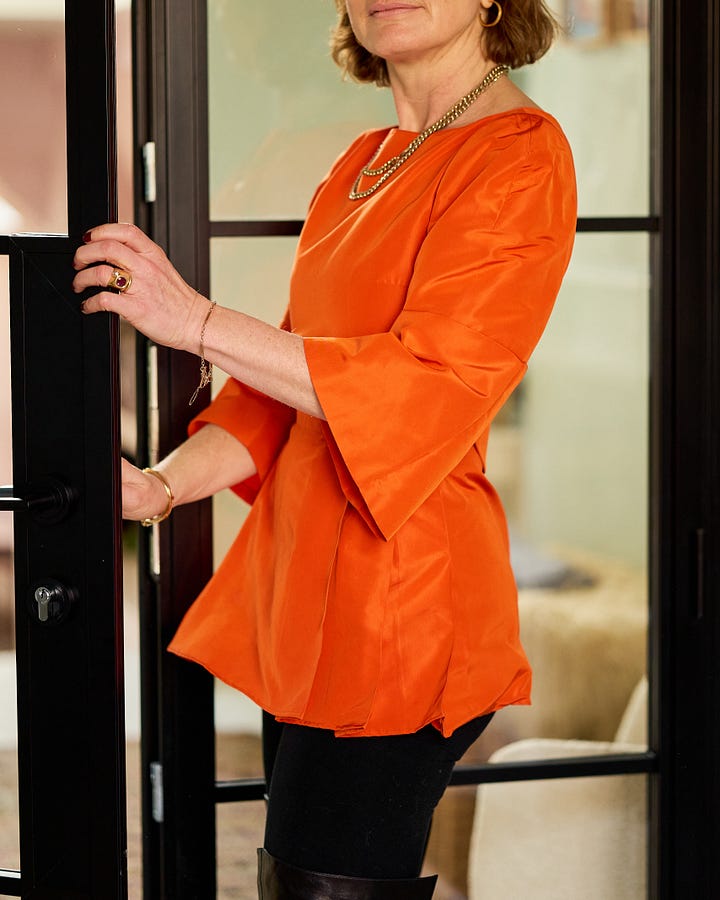
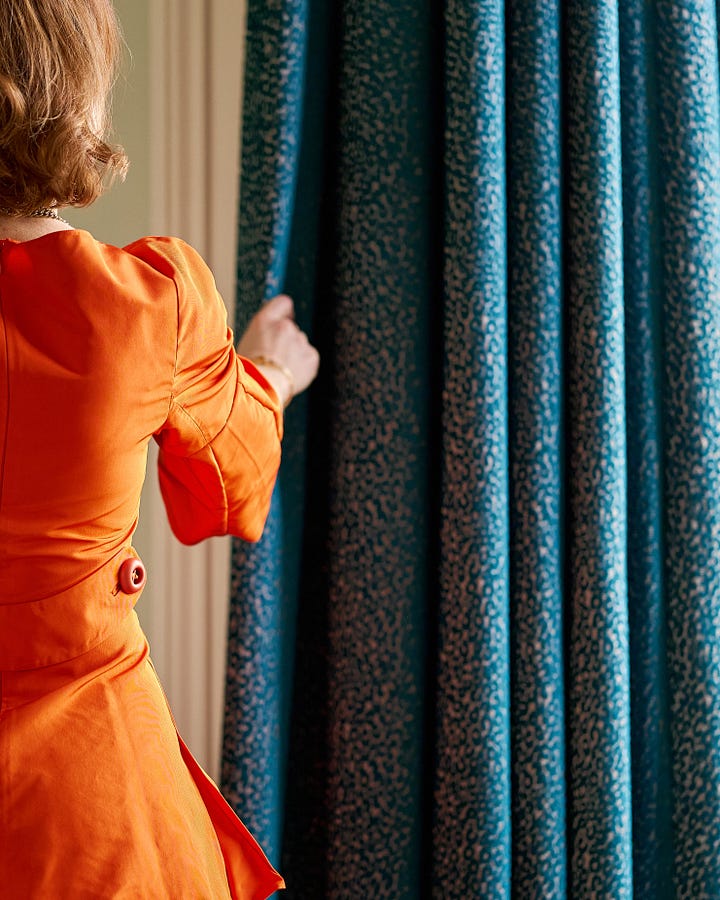
All this cost £60. I now have a new Prada top I wore on Friday night to a London Fashion Week show, I’ve rediscovered sexy as I have something appropriate to wear with the fetish boots that have been sitting in a box on top of my wardrobe for 10 years, and I can do it with denim for business meetings.
Nanna is not the only one finding that being handy with a needle promises a great future. Josephine Philips is the wunderkind behind SOJO, the app that Vogue calls “the Deliveroo for repairs”. Her mission is to wean everyone off fast fashion, teach the value of well tailored clothing, and show that with excellent fit you can prolong a garment’s lifetime for generations. She actually has a dress her 93 year old Granny gave her - that her Granny bought when she was just 19.
“I used to buy fast fashion, but once I understood the industry my feminism wouldn’t let me anymore,” Josephine explains. She discovered the garment industry, of which women make up 80%, is rife with abuse. “So then I got into buying in a different way, on Depop and car boot sales. And that was where I discovered that fit in the second hand market is such an issue. Sometimes these are one off, unique pieces and they need to work for you.”

And so a business around tailoring and repairs was born. Josephine herself, hilariously, can’t thread a needle, but as a fully paid up, Gen Z, tech fluent genius, she spotted an opportunity, creating an app that’s as simple to use as Uber, allows alterations and repairs from £10 a hem, and is set to change the habits of a whole new generation - one bred on fast fashion, with no idea of the joy of a well fitting garment. “Once you realise what good fit is, it changes your journey around every single item,” says Josephine. “Up till now that has so often been restricted to luxury. Our vision is making it mainstream to all.”
Josephine discovered that most dry cleaners offering repair or alteration are cash only. Imagine that! “That just isn’t accessible to people who are used to digitally fuelled experiences,” she laughs. “Mending isn’t commonplace anymore because it isn’t easy.”
So that bridesmaid dress sitting at back wardrobe, how do you give that a new life? “Small changes make a huge difference - not wearing a pair of trousers because you know they drag along the ground, or a skirt because it doesn’t fit around the waist and you can’t eat properly. I often hear that we wear the same ten items in our wardrobe over and again. Well ask yourself, what are those items, what is it about their fit is really right for you? What materials really work for you? How can you replicate that? Making those small shifts in your wardrobe can mean that pair of trousers at the back, making them work, makes you feel like you have a new item,” says Josephine passionately.
On the SOJO app you can book a collection, give the courier your alteration along with an item that already fits you to match the size, and a few days later the garment is delivered back to you. All you have to do is press a few buttons. “SOJO makes mending mainstream and easily adoptable - and scalable, because ultimately we are up against the clock.”
Investors love Josephine’s ideas and she has raised “a couple of million” already. She is currently offering the service in London, but plans are to scale it out as soon as. Brands are jumping to partner with her - Ganni, Ninety Percent, Loan Design Club, Archetype, Mood of Thought, and others are all incorporating Sojo into their customer service. “Brands can now take responsibility for end of life. They can understand when something is bought that’s not the end of that relationship - does it fit your customer? Are they wearing it? Are they repairing it?”
The Seam is another company making headway in this area, having just announced a partnership with Net a Porter. Unlike SOJO, which focuses on fit and repair, The Seam offers upcycling, trainer cleaning, handbag and shoe repairs aswell as alterations. Using a nationwide network of seamstresses and skilled individuals, who set their own price, Seam will match your requirement with a local mender. You pay their fee (from £15 for a trouser hem) plus 20% service charge.



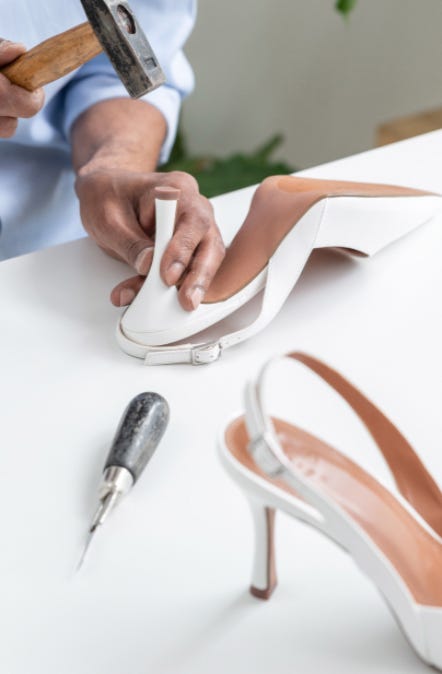


Their model allows for greater flexibility - so you can dial up in home appointments for make to measure and tailoring alterations, and they say one of their most popular requests is alterations around wedding dresses. Leather restoration, footwear repair and silk and denim specialisms are also on the menu. They also specialise in adaptable fashion, upcycling items for differently enabled customers, or those wheelchair bound. But like SOJO, the vast majority of their work is around alterations. Head of Brand Bronwyn Seier says “According to a Barclaycard survey, we return 47% of online purchases due to poor fit. Having a garment tailored provides an easy alternative to returning it.”
“We want to create a wardrobe that changes with you. It’s not saying you can’t change body shape, it’s that your clothes can too,” as Josephine says. It all feels so tantalisingly close. We banned plastic bags, we rediscovered glass milk bottle delivery, we stopped smoking, we wore helmets and seatbelts. How long till we get something repaired or altered instead of dumping it in the bin? It just needs government regulation, and we’re there.




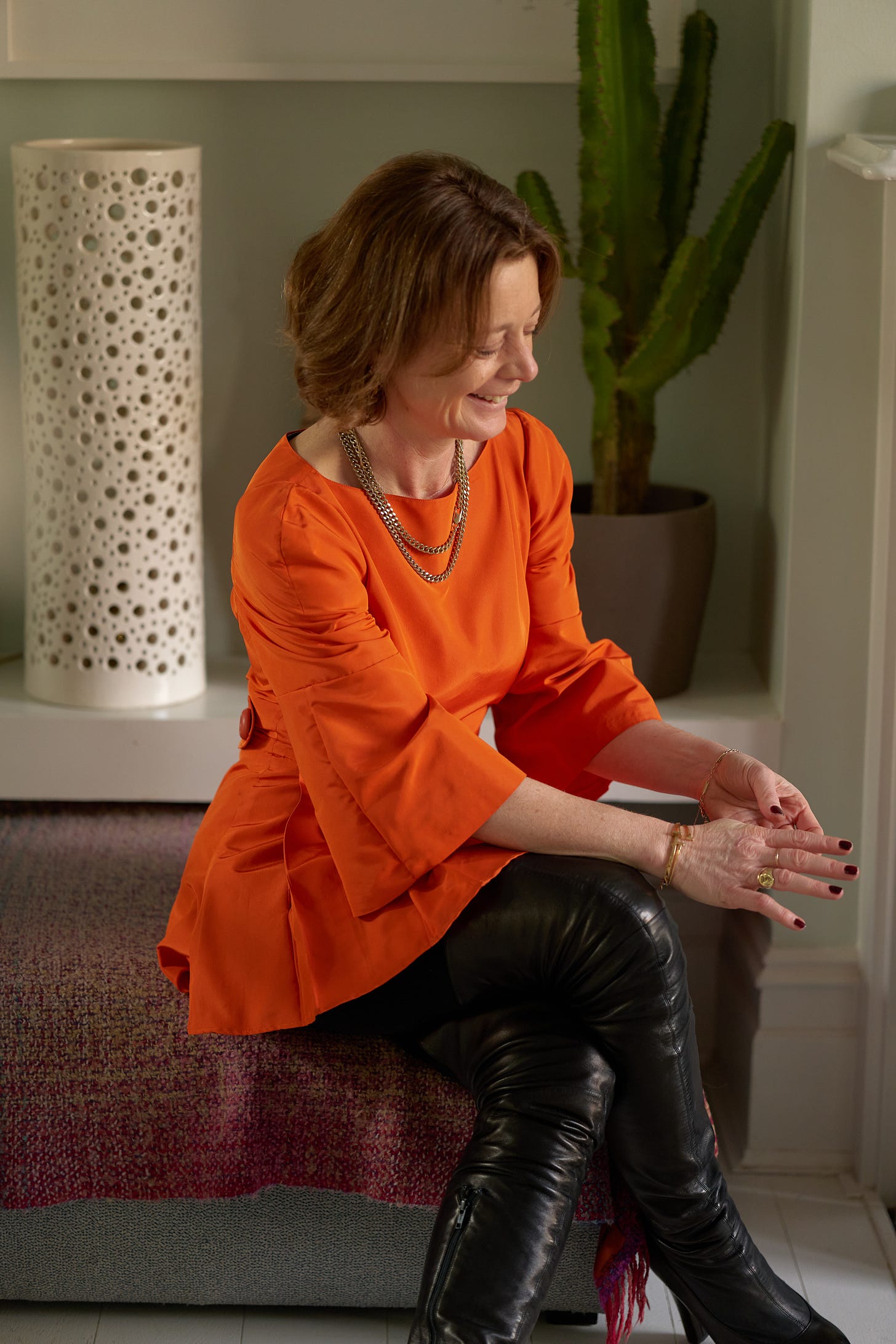

Be sure to investigate small collections by seamstresses like me when purchasing those 5 garments! If we continue buying fast fashion for the 5, it perpetrates that industry. Think small! Not long ago all clothing was sewn at home or by small tailor and seamstress shops. We can return to that model. Then the garments are either made for you or easily altered for you. Fantastic fit! Learn the joy of good construction and fine fabrics. Learn to spend money on fine workmanship (workwomanship?) and enjoy knowing you are supporting an artisan.
I completely missed this excellent article! Winner